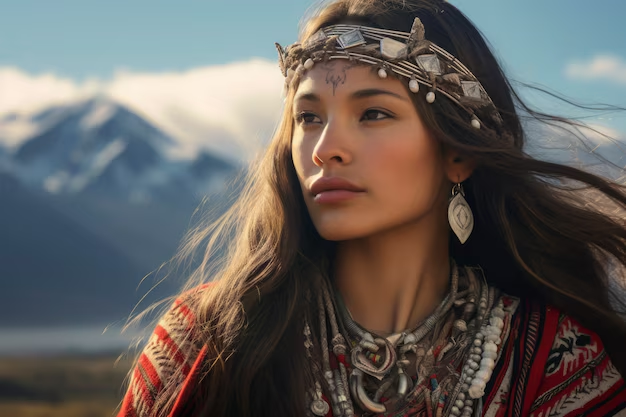Introduction to native american models
The world of fashion often highlights diversity, yet many voices remain unheard. Among them are the remarkable Native American models who bring their unique heritage to the runway and editorial pages. These individuals not only showcase stunning beauty but also embody rich cultural narratives that deserve recognition. As they break barriers and redefine standards in an industry historically dominated by a single perspective, these models remind us of the importance of representation. Dive into the fascinating journey of Native American models as we explore their history, contemporary influences, and the challenges they face while making waves in a global arena.
History of Native American Models
The history of Native American models is rich and layered. For centuries, Indigenous peoples have expressed their identity through attire and adornment. Traditional garments often showcased intricate beadwork and unique designs that told stories.
However, it wasn’t until the late 20th century that Native American representation in mainstream modeling began to emerge. Pioneering figures like Rita Coolidge broke barriers, showcasing Indigenous beauty on global stages.
As awareness grew, more models stepped into the spotlight. They not only represented fashion but also challenged stereotypes about Native cultures. Each model brought a glimpse of their heritage to the runway.
Today’s landscape reflects a blend of tradition and modernity. The rise of social media has allowed these voices to amplify their stories further, connecting with audiences worldwide while embracing cultural pride in every stride they take on runways or photo shoots.
Contemporary Native American Models Making Waves
Today, a new generation of Native American models is making significant strides in the fashion world. With their rich heritage and striking presence, these individuals are challenging stereotypes and reshaping industry norms.
Models like Quannah Chasinghorse have emerged as powerful advocates for Indigenous rights and representation. Their influence extends beyond just modeling; they use platforms to raise awareness about environmental issues affecting Native lands.
Another rising star, Ashley Callingbull, has broken barriers as the first Indigenous woman to win Mrs. Universe. Her achievements spotlight not only beauty but also resilience and empowerment within her community.
These contemporary figures embrace their cultural identities while navigating a predominantly Eurocentric industry. They remind us that diversity enriches fashion, bringing fresh perspectives and stories that deserve recognition on global runways.
The Influence and Impact of Indigenous Representation in Modeling
Indigenous representation in modeling wields substantial influence. It reshapes beauty standards and expands public perception of what models can embody.
When Native American models step onto the runway, they bring their rich cultural heritage with them. This presence challenges stereotypes and promotes understanding among diverse audiences.
Their visibility fosters a sense of pride within Indigenous communities. Young individuals see themselves reflected in these role models, inspiring future generations to pursue careers in fashion and beyond.
Moreover, brands that prioritize Indigenous representation send powerful messages about inclusivity. They acknowledge unique narratives that deserve recognition within mainstream media.
This shift is not just cosmetic; it influences fashion trends, marketing strategies, and storytelling approaches across the industry. As more people embrace diverse imagery, the landscape of modeling continues to evolve for the better.
Challenges and Controversies Faced by Native American Models
Native American models often navigate a complex landscape filled with challenges. One major issue is the struggle against stereotypes and cultural appropriation. Many fashion brands fail to accurately represent Indigenous cultures, opting instead for stylized interpretations that dilute authenticity.
Additionally, there is a lack of opportunities in the modeling industry. While some Native models gain visibility, they still face barriers when competing against non-Indigenous counterparts who receive more mainstream attention and support.
Social media has provided a platform for awareness but can also amplify negative narratives. Criticism from within Indigenous communities sometimes emerges regarding representation choices made by these models.
Another challenge lies in balancing traditional values with modern career demands. Models aspire to showcase their heritage while also striving for success in an often exploitative industry that may not prioritize their stories or perspectives.
How the Fashion Industry Can Continue to Support and Empower Native American Models
The fashion industry has a significant role to play in uplifting Native American models. It starts with representation. Designers and brands should actively include Indigenous faces in their campaigns, runway shows, and editorial work.
Mentorship programs can bridge the gap for emerging talent. Connecting young Native American models with established figures would foster growth and confidence within the community.
Additionally, collaborations that celebrate Indigenous culture can raise awareness while providing visibility. These partnerships should prioritize authenticity to ensure respect for traditions.
Brands could also advocate for fair pay practices and inclusive hiring policies. By committing to equitable treatment, they create a more supportive environment.
Educational initiatives about Native American history and culture are essential for breaking stereotypes. The fashion world must embrace diversity not just as a trend but as a core value moving forward.
Conclusion: Celebrating the Diversity and Beauty of Indigenous Culture in Modeling
Celebrating the diversity and beauty of Indigenous culture in modeling is essential for a more inclusive fashion industry. Native American models bring unique perspectives, stories, and aesthetics that enrich the world of fashion. Their contributions challenge stereotypes while showcasing the depth of their heritage.
As these talented individuals continue to break barriers, they redefine beauty standards and inspire future generations. The visibility of Native American models encourages a broader understanding of different cultures, fostering appreciation rather than appropriation.
By supporting Indigenous representation in modeling, we create space for authentic narratives to flourish. This not only benefits the models but also enhances the overall landscape of fashion. It’s vital that brands commit to inclusivity by working with Native American talent and respecting their cultural significance.
The journey toward greater recognition in this field is ongoing. However, each step taken contributes to a richer tapestry within the industry—one where every voice matters, including those from vibrant Indigenous communities across North America. Embracing this diversity transforms not just runway shows but also societal perceptions about beauty itself.

